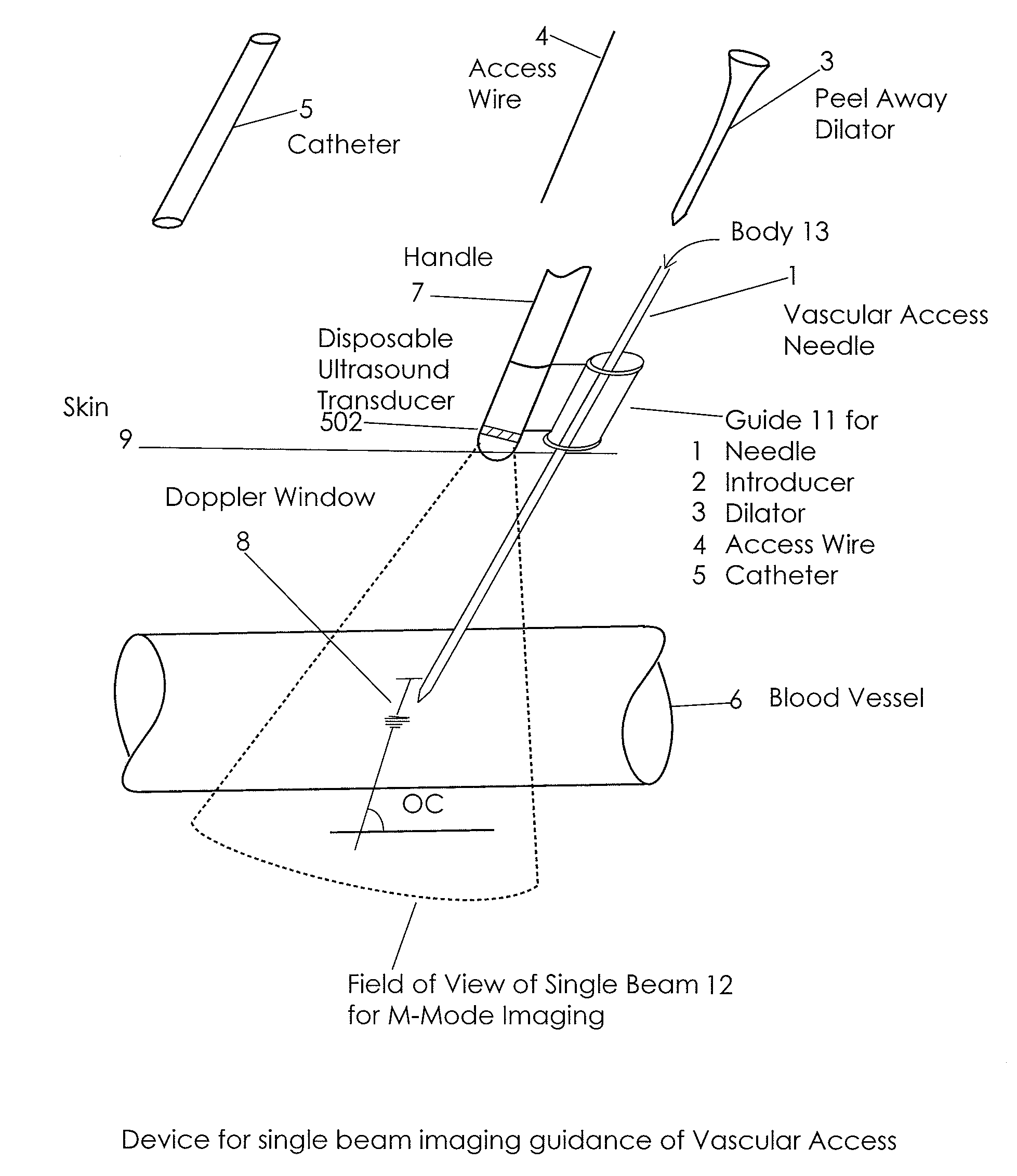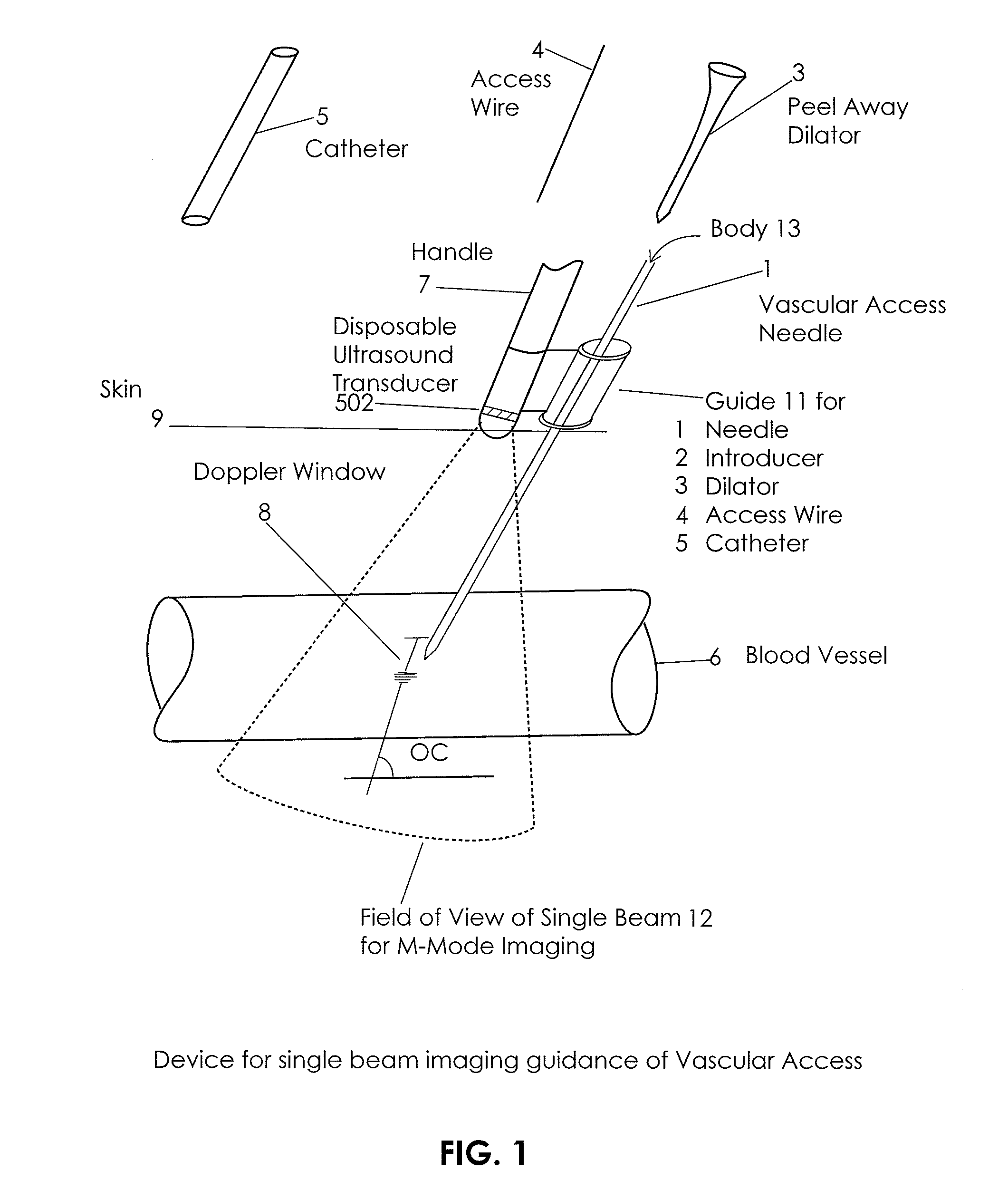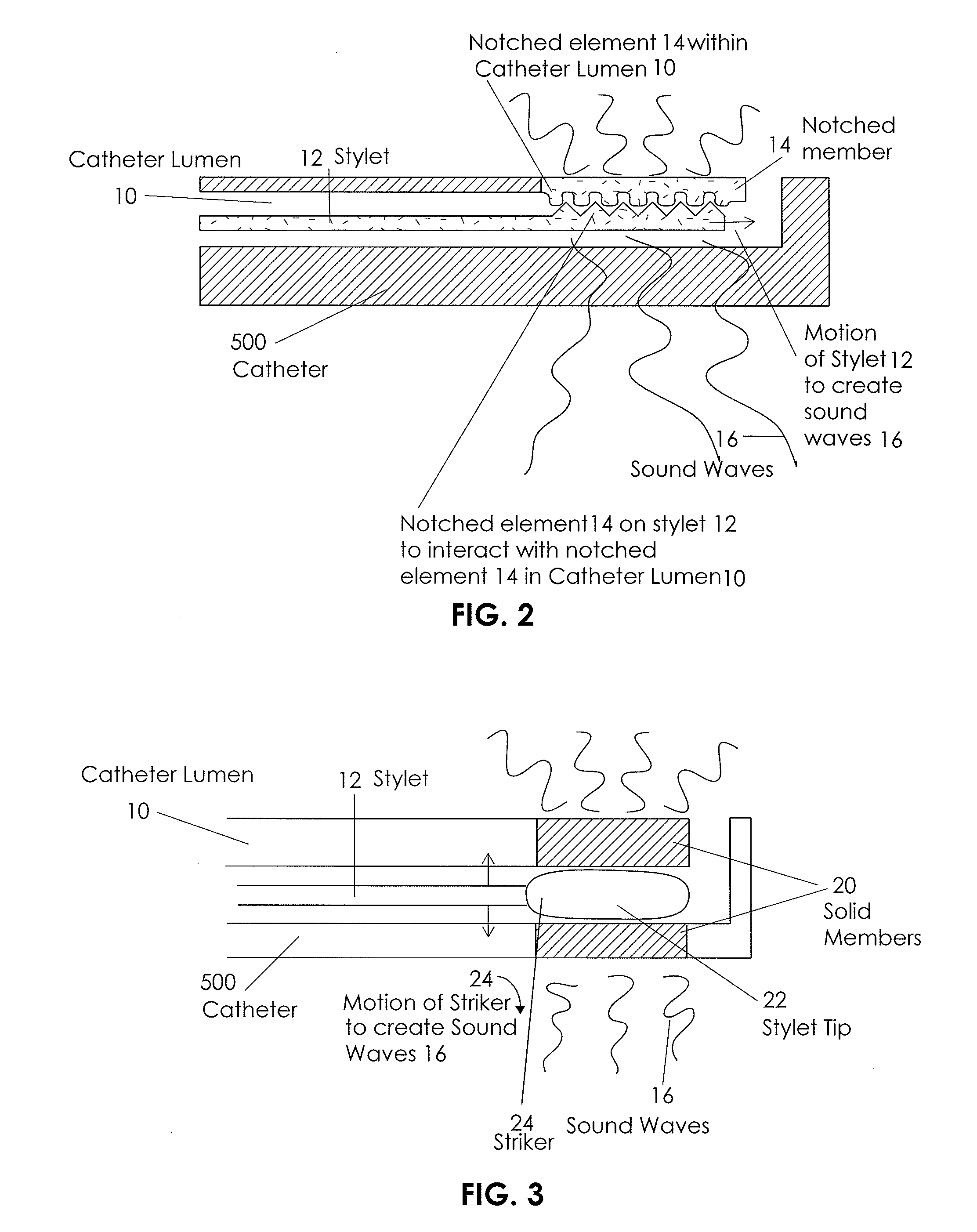Apparatus and Method for Vascular Access
a technology of vascular access and apparatus, which is applied in the field of guided cannulation of veins and arteries, can solve the problems of increasing workflow complexity, wasting time, and wasting patient time, and avoiding the use of current guided cannulation devices
- Summary
- Abstract
- Description
- Claims
- Application Information
AI Technical Summary
Benefits of technology
Problems solved by technology
Method used
Image
Examples
Embodiment Construction
[0097]An aspect of the invention includes a transcutaneous ultrasound vascular access guiding system comprising: a single element ultrasound device providing A-Mode imaging, Doppler and correlation-based blood velocity estimation; a processor to process and correlate ultrasound information; and a system for information output. The transcutaneous ultrasound vascular access guiding system may also comprise a lens which controls the single element ultrasound beam shape. The transcutaneous ultrasound vascular access guiding system may also comprise a lens which provides a matching layer between the ultrasound transducer and the skin. transcutaneous ultrasound vascular access guiding system comprising can be constructed as a single-use device. Also, the information can be output as a scrolling chart. The Doppler information can be bidirectional. The Doppler acquisition can be pulsed or continuous wave (PW or CW).
[0098]Another aspect of the invention includes an endovascular device guide ...
PUM
 Login to View More
Login to View More Abstract
Description
Claims
Application Information
 Login to View More
Login to View More - R&D
- Intellectual Property
- Life Sciences
- Materials
- Tech Scout
- Unparalleled Data Quality
- Higher Quality Content
- 60% Fewer Hallucinations
Browse by: Latest US Patents, China's latest patents, Technical Efficacy Thesaurus, Application Domain, Technology Topic, Popular Technical Reports.
© 2025 PatSnap. All rights reserved.Legal|Privacy policy|Modern Slavery Act Transparency Statement|Sitemap|About US| Contact US: help@patsnap.com



